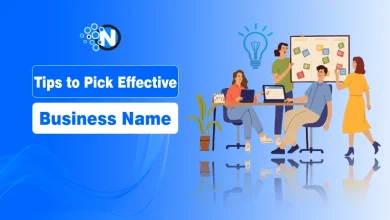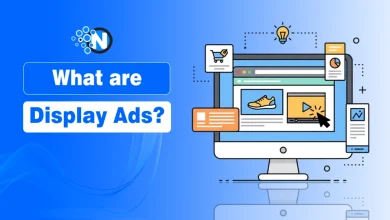
I started blogging more than 12 years ago, and to be honest, it was not smooth at all. At every turn, I made mistakes. Some small, some big, and a few that nearly made me quit. From choosing the wrong platforms to writing without direction, I got stuck often.
But the one thing that kept me going was consistency and learning. Every day, I tried to understand what was happening in the world of search engines. And one thing became clear very early: if you’re writing with the dream of making money, you need to evolve with the changes. Google never stands still, and neither should a blogger.
Even today, mistakes happen. The difference is, I now see them as lessons instead of failures. Step by step, that mindset helped me build one of my successful blogs Nogentech.org, a platform I’m proud of.
That’s why I’m writing this guide. If you’re reading this and struggling to grow your blog, chances are you might be making one (or more) of the same mistakes I made in my early days. The good thing is that you can fix them.
Top Beginner Blogger Mistakes to Avoid for Success

1. Using Free Hosted Blogging Platforms
Many beginners start their blogging journey with free platforms like Blogger, Wix, or WordPress.com. They are attractive because they cost nothing and require no technical setup. But here’s the catch: free blogging platforms put you in a box.
Why It’s a Mistake:
- You don’t fully own your blog, your account can be suspended anytime.
- Your URL looks unprofessional (e.g., myblog.wordpress.com).
- Customization and monetization options are very limited.
- It’s harder to build credibility and trust with readers.
It is just like renting a small corner of someone else’s shop. You might decorate it a little, but you’ll never have the freedom of running your own store.
How to Avoid It:
- Invest in a custom domain name (usually $20-50/year).
- Buy hosting from reliable providers like Bluehost, SiteGround, or Hostinger.
- Use WordPress.org, a self-hosted platform, which gives you complete control.
2. Blogging Without a Clear Plan
Starting a blog without a roadmap is like trying to drive across the country with no GPS. You’ll likely take wrong turns, waste time, and end up frustrated.
Why It’s a Mistake:
- You run out of ideas quickly.
- You write content that doesn’t attract readers.
- You can’t measure progress because you don’t know what success looks like.
How to Avoid It:
- Pick a niche that combines passion + demand (e.g., eco-friendly living, digital marketing tips, or quick recipes for busy parents).
- Do keyword research to find what people are searching for. Tools like Ahrefs or SEMrush can help.
- Build a content calendar: plan at least 1-2 months of posts in advance.
- Set goals: Do you want traffic, email subscribers, or income? Each goal requires a different approach.
👉 Pro Tip: Treat your blog like a magazine. Every issue (month) should have a theme, planned articles, and deadlines. This structure makes it easier to stay consistent.
3. Inconsistent Posting Schedule
Many beginners start with enthusiasm, publishing multiple posts in their first month. Then life gets busy, motivation dips, and weeks pass without an update. This inconsistency confuses readers and hurts your blog’s growth.
Why It’s a Mistake:
- Readers stop checking your site.
- Google prefers consistent, fresh content.
- You lose your writing habit and it makes it harder to restart.
How to Avoid It:
- Decide on a realistic frequency (e.g., once a week or twice a month).
- Batch-write posts ahead of time and schedule them in WordPress.
- Use productivity tools like Trello, Notion, or Google Calendar to organize ideas.
Example: A food blogger who posts one recipe every Sunday at 5 pm creates anticipation. Her readers know when to check back, which builds loyalty. Compare that to a blogger who posts randomly, her audience never knows when (or if) she’ll update.
4. Not Knowing Your Target Audience
One of the biggest beginner mistakes is writing for yourself instead of your readers. A blog is not a diary (unless that’s your explicit goal). To grow, your content must serve a clear audience.
Why It’s a Mistake:
- Generic content attracts no one.
- You miss opportunities to connect deeply with readers.
- Your blog feels unfocused, which discourages people from subscribing.
How to Avoid It:
- Create a reader persona: age, gender, goals, pain points, and preferred style.
- Write in a tone that matches your audience. For example, if your audience is young professionals, keep your style practical and energetic.
- Focus on solving problems. Ask yourself: “What question is my reader asking, and how can I answer it better than anyone else?”
Example: If you run a personal finance blog, are you writing for college students with $500 to their name, or for parents saving for retirement? Each audience has different needs, so your content must be customized.
5. Neglecting Promotion
Many beginners think blogging is only about web writing. They publish and wait for readers to show up. Unfortunately, the internet doesn’t work that way, promotion is just as important as creation.
Why It’s a Mistake:
- Your posts get little visibility.
- Traffic grows slowly (or not at all).
- You miss opportunities to build an audience outside your blog.
How to Avoid It:
- Share posts on relevant social platforms (Pinterest for lifestyle, LinkedIn for business, Twitter/X for discussions).
- Repurpose your content into videos, infographics, or newsletters.
- Network with other bloggers through guest posts but here you also need to avoid some common guest blogging mistakes.
- Learn the basics of SEO so your posts rank organically.
👉 Pro Tip: Follow the 80/20 rule, spend 20% of your time creating content and 80% promoting it.
6. Prioritizing Quantity Over Quality
A common misconception is that posting as much as possible will make your blog grow faster. In reality, quality always wins over quantity. Ten thin blog posts won’t bring the same impact as one comprehensive, valuable guide.
Why It’s a Mistake:
- Low-quality posts have higher bounce rates (people leave quickly).
- Google rewards depth and expertise.
- Poor content damages your reputation.
How to Avoid It:
- Focus on creating pillar posts, long, detailed, and authoritative articles.
- Use storytelling, visuals, and examples to make content engaging.
- Update old posts to keep them fresh and relevant.
Example: A 2,000-word in-depth guide on “How to Start a Vegetable Garden” will likely bring more traffic (and backlinks) than ten short 300-word posts about random gardening tips.
7. Skipping SEO and AEO
For years, beginner bloggers have ignored SEO (Search Engine Optimization), thinking it’s too technical or unnecessary in the early stages. But in today’s world, ignoring AEO (Answer Engine Optimization) is just as costly.
Search engines are no longer the only gateways to traffic. Tools like Google’s AI-powered results, ChatGPT, Microsoft Copilot, and Perplexity AI are now delivering answers directly to users. If your content isn’t optimized for both SEO and AEO, you risk being invisible where people are searching most.
Why It Hurts:
- Without SEO, your blog won’t rank in Google, limiting long-term organic traffic.
- Without AEO, your content can never show up in AI-powered answers and summaries.
- Competitors who adapt early will dominate visibility.
How to Avoid It:
- Master SEO basics: keyword research, on-page optimization, internal linking, meta descriptions, and site speed.
- Think AEO-friendly: structure your content in Q&A formats, use clear headings, concise definitions, and bullet-point summaries. This makes it easier for AI tools to extract and recommend your content.
- Optimize for featured snippets (position zero) in Google, since these often feed into AI-generated answers.
- Use tools like Yoast, Rank Math, or Surfer SEO for traditional optimization, and keep an eye on AI search and latest content writing trends.
The future of blogging is about visibility across both search engines and answer engines. If you skip either one, you’re leaving huge traffic opportunities behind.
8. Ignoring Blog Design and User Experience
Your blog design is more than just “how it looks.” It’s the very first impression a reader gets, and if it’s messy, outdated, or hard to navigate, most visitors won’t stick around to read your content, no matter how good it is.
Why It’s a Mistake:
- Poor design reduces trust.
- Complicated navigation frustrates visitors.
- Slow pages increase bounce rates.
How to Avoid It:
- Choose a clean, responsive theme that looks professional across all devices.
- Focus on readability: large enough fonts, proper spacing, and good contrast.
- Keep navigation simple, make categories clear and menus easy to use.
- Optimize your site speed: compress images, use a caching plugin, and avoid heavy scripts.
- Don’t overload with ads and pop-ups; balance monetization with user experience.
Example: Think about two recipe blogs. One is clean, with easy-to-follow steps and big, bright photos. The other has tiny text, flashing ads, and pop-ups everywhere. Which one would you trust?
9. Giving Up Too Early
This is the most heartbreaking mistake of all. Many beginners quit after a few months because they do not see instant results. Blogging takes time, it’s a marathon, not a sprint.
Why It’s a Mistake:
- You miss out on long-term growth that compounds over time.
- You never discover your blog’s full potential.
- Quitting reinforces the belief that “blogging doesn’t work.”
How to Avoid It:
- Set realistic expectations: it often takes 6-12 months to see strong results.
- Celebrate small milestones like your first 100 visitors or first email subscriber.
- Keep learning and improving instead of chasing perfection.
📌 Fact: The biggest difference between successful bloggers and those who quit? Persistence. If you hang on, adapt, and keep showing up, you’ll eventually reap the rewards.
Ending Note
Even after more years of blogging, I’ll be honest with you, I still make mistakes. Sometimes it’s rushing content, sometimes it’s ignoring promotion, and sometimes it’s just trying to do too many things at once.
But the difference now is, I don’t let mistakes stop me. I treat them as part of the journey.
What really matters is consistency, patience, and the willingness to learn and adapt. Search engines will keep changing. Blogging trends will keep shifting.
But if you stay focused on delivering value to your readers, keep up with the industry, and avoid the major pitfalls I’ve shared above, your blog will grow stronger with time.
Blogging is a marathon, not a sprint. Stay consistent, keep experimenting, and keep learning. Who knows? A few years from now, you can be the one sharing your success story and guiding new bloggers through their own journey.
People Also Ask
How long does it take to grow a successful blog?
Most blogs take 6-12 months of consistent effort before seeing steady traffic and results.
How often should I publish new blog posts?
At least once a week is a good starting point, but consistency matters more than frequency.
What tools can help with keyword research?
Popular beginner-friendly tools include Ubersuggest, Google Keyword Planner, and Ahrefs.
Do I need to learn coding to run a blog?
No, most blogging platforms like WordPress offer drag-and-drop themes and plugins.
How important is social media for blog growth?
Very important. Social sharing helps you reach new audiences beyond search engines.




